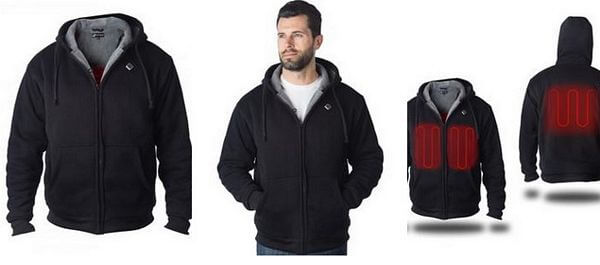Heated clothing has become a popular choice for staying warm and comfortable during cold weather or outdoor activities. Whether you own heated jackets, vests, gloves, or socks, proper storage is essential to maintain their functionality and extend their lifespan.
In this article, we will discuss important guidelines and tips for storing your heated clothing correctly, ensuring both safety and optimal performance.
Clean Before Storage
Before storing your heated clothing, it’s crucial to clean them properly. Follow the manufacturer’s instructions for cleaning, as different heated garments may have specific care requirements. Generally, it is recommended to remove the heating elements (if removable) and wash the clothing following the care instructions provided. Ensure that the garments are completely dry before proceeding to the next step.
Remove Batteries or Power Sources
To prevent any potential hazards and prolong battery life, it’s important to remove the batteries or power sources from your heated clothing before storing them. Unplug any power cables or detach rechargeable battery packs, following the manufacturer’s instructions. Properly storing the batteries separately will help maintain their performance and prevent any potential leakage.
Fold or Hang Properly
Consider the best storage method based on the type of heated clothing you own:
- Folding: If your heated clothing, such as jackets or vests, is made of flexible materials, folding them neatly is a suitable option. Avoid folding them excessively or tightly, as this can damage the heating elements or wiring inside.
- Hanging: Heated gloves, socks, or other smaller items with rigid structures are best stored by hanging them. Use a hanger specifically designed for gloves or socks to maintain their shape and prevent creasing.
Use Breathable Storage Containers or Bags
To protect your heated clothing from dust, moisture, and potential damage, store them in breathable storage containers or bags. Avoid using plastic bags or airtight containers, as they can trap moisture and cause mold or mildew growth. Opt for fabric storage bags or breathable garment bags that allow air circulation while keeping your clothing clean and protected.
Store in a Cool, Dry Place
Choose a cool, dry location for storing your heated clothing. Excessive heat or humidity can negatively affect the performance and lifespan of the heating elements. Avoid storing them in areas exposed to direct sunlight, near heaters, or in damp basements. A closet or a dedicated storage area away from extreme temperature fluctuations is ideal.
Regularly Check and Inspect
Periodically inspect your stored heated clothing to ensure they remain in good condition. Look for any signs of damage, loose wiring, or wear and tear. If you notice any issues, consult the manufacturer or a qualified professional for repairs or replacements.
Follow Manufacturer’s Guidelines
Always refer to the manufacturer’s instructions and guidelines specific to your heated clothing. Manufacturers often provide specific storage recommendations to ensure the longevity and safety of their products. Familiarize yourself with these guidelines and follow them accordingly.
Conclusion
Properly storing your heated clothing is essential for maintaining their functionality, longevity, and safety.
By cleaning them before storage, removing batteries or power sources, folding or hanging them appropriately, using breathable storage containers, storing them in a cool, dry place, regularly inspecting them, and following the manufacturer’s guidelines, you can ensure that your heated clothing remains in optimal condition. Take care of your investment, and enjoy the warmth and comfort of your heated garments season after season.

For over 12 years, I have been testing and reviewing heating technologies that overcome cold weather conditions. In recent years, I have specialized in the heated apparel. I’ve made it my mission to educate people about heated clothing.
